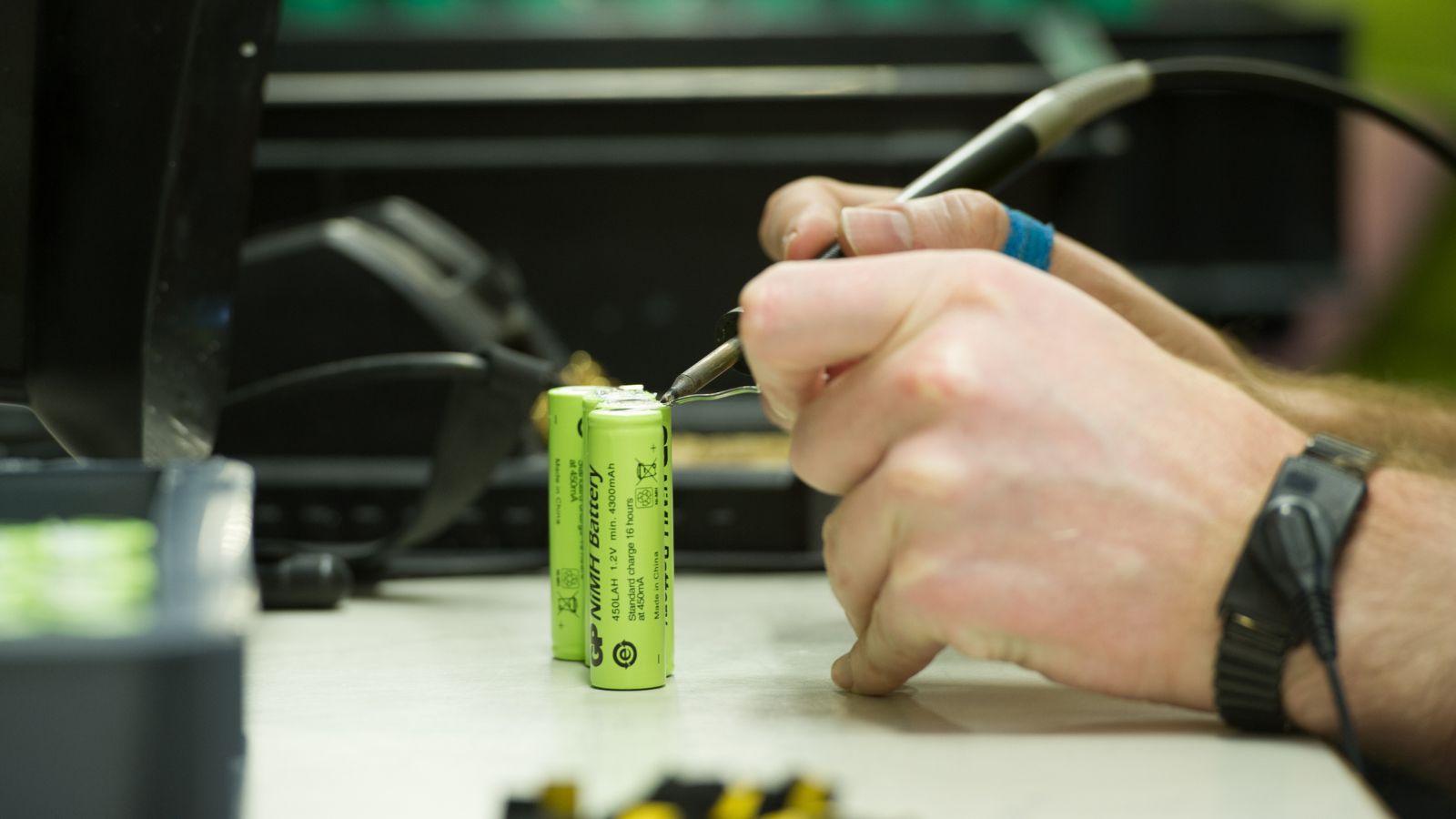Lithium-ion battery
This is currently the most requested rechargeable chemistry and has been available for almost thirty years. These cells offer the most energy dense solution of the currently available chemistries, measured both by mass (watts per kilogram) and volume (watts per cubic metre).
Li-ion packs come in assorted shapes and sizes. Primarily there are three formats, cylindrical cells, prismatic cells and pouch cells. Pouch cells are typically used for applications that need the battery in a particular shape, or where the highest energy density (energy within a given volume) is sought. Examples include smart watches, tablet computers and some battery powered electric vehicles.
A drawback of pouch cells is they are prone to swelling, particularly as they age, which leads to rapid loss of capacity and, ultimately, failure. In larger applications they are frequently contained in strong structures to keep them compressed to avoid this swelling which helps in maintaining their life. Cylindrical cells are the most produced format securing the chemical and electrical components in a steel can.
These cells offer a similar energy density to pouch cells, and are also used in a diverse range of applications including laptops, power tools, robotics and electric vehicles. Prismatic cells are the least common type but are still widely used and are also formed in a metal case but of a broadly rectangular shape. They were most commonly found in mobile phones in the 90s when the battery was replaceable and are now often used in medical devices and other consumer/industrial applications.


